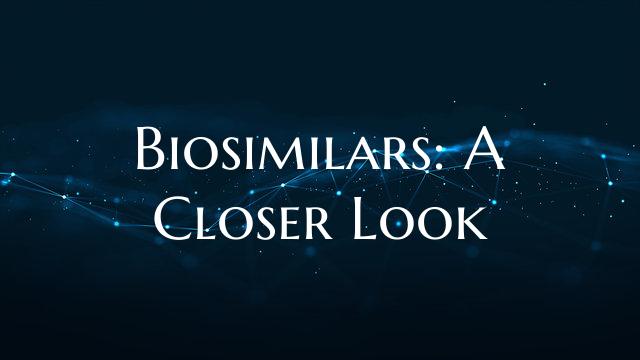Biosimilars: A Closer Look
In recent years, biosimilars have emerged as a significant development in the field of biopharmaceuticals, offering new opportunities for patients, providers, and healthcare systems. These complex biological products are designed to be highly similar versions of existing biologic medicines, providing cost-effective alternatives while maintaining comparable efficacy and safety profiles.
Understanding the intricacies of biosimilars is essential for stakeholders to make informed decisions about their use and impact on the healthcare landscape. Here, we take a closer look at the key aspects surrounding biosimilars and their role in modern medicine.
1. What are Biosimilars? Biosimilars are biologic products that are highly similar to an already approved biologic medicine (known as the reference product), with no clinically meaningful differences in terms of safety and efficacy. Unlike generic drugs, which are chemical copies of their reference products, biosimilars are not exact replicas due to the complex nature of biologics.
2. Regulatory Pathway and Approval Process The regulatory pathway for biosimilars involves a rigorous evaluation process by regulatory authorities to ensure that they meet criteria for similarity to the reference product. This includes extensive comparative analytical studies, non-clinical, and clinical trials to demonstrate similarity in terms of pharmacokinetics, pharmacodynamics, efficacy, and safety.
3. Benefits of Biosimilars One of the primary benefits of biosimilars is the potential to increase patient access to cost-effective biologic treatments, driving competition in the market and reducing healthcare costs. Biosimilars also offer an opportunity for healthcare systems to reallocate resources and improve overall patient outcomes.
4. Challenges and Barriers Despite their potential benefits, biosimilars face challenges and barriers that impede their widespread adoption. These include issues related to regulatory pathways, patent litigation, physician and patient acceptance, as well as concerns about interchangeability and immunogenicity.
5. Global Market Landscape The biosimilars market is rapidly evolving, with increased competition among manufacturers driving innovation and market growth. Key regions such as the United States, Europe, and Asia are witnessing significant developments in biosimilar approvals and market penetration, creating opportunities for expansion and investment.
6. Future Perspectives As biosimilars continue to gain traction in the biopharmaceutical industry, their role in healthcare is expected to expand, offering new therapeutic options for a range of medical conditions. Future directions in biosimilars research and development aim to address current challenges and further optimize their use in clinical practice.
In conclusion, biosimilars represent a promising avenue for improving patient access to vital biologic therapies while addressing the increasing economic burden on healthcare systems. By closely examining the development, regulation, and market dynamics of biosimilars, stakeholders can harness the full potential of these innovative biopharmaceutical products.

